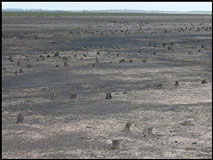Crossref Citations
This article has been cited by the following publications. This list is generated based on data provided by
Crossref.
Campos, P.H.O.V.
Appoloni, C.R.
Rizzutto, M.A.
Leite, A.R.
Assis, R.F.
Santos, H.C.
Silva, T.F.
Rodrigues, C.L.
Tabacniks, M.H.
and
Added, N.
2019.
A low-cost portable system for elemental mapping by XRF aiming in situ analyses.
Applied Radiation and Isotopes,
Vol. 152,
Issue. ,
p.
78.
Gutierrez, Maria Paz
2020.
The Northwestern Amazon malocas: Craft now and then.
Journal of Material Culture,
Vol. 25,
Issue. 1,
p.
3.
Gonçalves, Thaís A. P.
Navarro, Alexandre G.
Nisgoski, Silvana
and
Sonsin-Oliveira, Júlia
2021.
The trees of the Water People: archeological waterlogged wood identification and near-infrared analysis in Eastern Amazonia.
Wood Science and Technology,
Vol. 55,
Issue. 4,
p.
991.
Alves de Moraes, Caio
Lima da Costa, Marcondes
Guida Navarro, Alexandre
Nunes da Silva Meneses, Maria Ecilene
Boiadeiro Ayres Negrão, Leonardo
Pöllmann, Herbert
and
Behling, Hermann
2021.
Holocene coastal environmental changes inferred by multi-proxy analysis from Lago Formoso sediments in Maranhão State, northeastern Brazil.
Quaternary Science Reviews,
Vol. 273,
Issue. ,
p.
107234.
Navarro, Alexandre Guida
2021.
Navegando pelo Turiaçu: a reprodução cosmológica do rio Amazonas e o mito da cobra-canoa e sua relação com as estearias do Maranhão.
História (São Paulo),
Vol. 40,
Issue. ,
Guida Navarro, Alexandre
2021.
Ecosystem and Biodiversity of Amazonia.
Guida Navarro, Alexandre
2021.
anaconda como serpiente-canoa: mito y chamanismo en la Amazonía Oriental, Brasil.
Boletín de Antropología,
Vol. 36,
Issue. 61,
p.
164.
Navarro, Alexandre Guida
2022.
Modos de fabricar o corpo nas estearias: estudo arqueológico das estatuetas dos povos palafíticos do Maranhão.
Boletim do Museu Paraense Emílio Goeldi. Ciências Humanas,
Vol. 17,
Issue. 1,
Davis, Christopher
and
Navarro, Alexandre Guida
2023.
Plan of prehistoric stilt village in Maranhão Brazil may resemble the Pleiades.
Journal of Archaeological Science: Reports,
Vol. 51,
Issue. ,
p.
104123.
Navarro, Alexandre
2023.
Ancestral Waters: Material Culture, Notion of Transformation and Shamanism in the Stilt Villages in Eastern Amazonia.
Cambridge Archaeological Journal,
Vol. 33,
Issue. 3,
p.
537.
Porro, Noemi Sakiara Miyasaka
Ruschel, Ademir Roberto
Porro, Roberto
and
Santos, José do Nascimento
2023.
A ‘mãe palmeira’ ante a privatização de terras sob uso comum: desafios para a conservação do babaçu por quilombolas no vale do Mearim, Brasil.
Boletim do Museu Paraense Emílio Goeldi. Ciências Humanas,
Vol. 18,
Issue. 2,
Gomes, Denise Maria Cavalcante
Costa, Angislaine Freitas
Munita, Casimiro Sepúlveda
and
da Cunha, João Paulo Lopes
2023.
Archaeological Evidence of the Development of a Regional Society in Santarém (AD 1000–1600), Lower Amazon: A Path to Understanding Social Complexity.
Journal of World Prehistory,
Vol. 36,
Issue. 2-4,
p.
147.
Luís Porsani, Jorge
Guida Navarro, Alexandre
Corrêa Rangel, Rodrigo
Carlos de Siqueira Neto, Antonio
Gonçalves de Lima, Leonardo
Cesar Stangari, Marcelo
Antonio Pereira de Souza, Luiz
and
Rafael Neris dos Santos, Vinicius
2023.
GPR survey on underwater archaeological site: A case study at Jenipapo stilt village in the eastern Amazon region, Brazil.
Journal of Archaeological Science: Reports,
Vol. 51,
Issue. ,
p.
104114.
Xavier, Sergio Augusto Santos
Ledru, Marie-Pierre
Bremond, Laurent
Favier, Charly
and
de Araújo, Francisca Soares
2024.
Millennial-scale variability of vegetation and fire activity in a northern Cerrado driven by an east-west rainfall gradient during the Holocene.
The Holocene,





